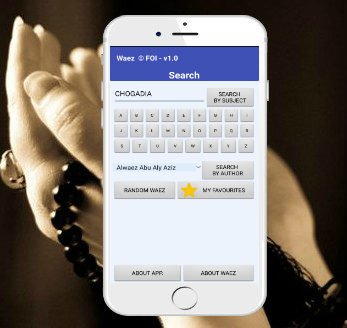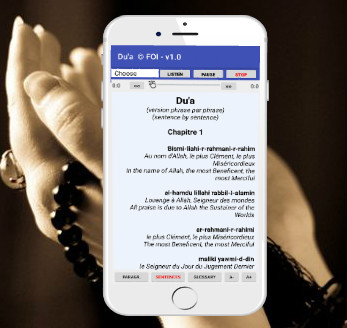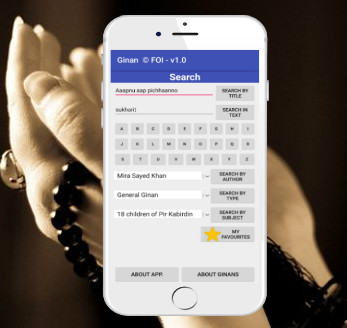¤ article_page
A Modern History of the Ismailis Continuity and Change in a Muslim Community
There are between 70,000 and 80,000 Shia Imami Ismaili Muslims (also known as Nizari Ismaili Muslims, or simply, Ismailis) in Canada. The largest settlements are in Toronto and Vancouver, with substantial communities (jamats; jama'ats) located in Calgary, Edmonton, Montreal and Ottawa. Ismaili migration to Canada .occurred in the 1950s, with significant increases taking place between the 1970s and 1990s.1 The expulsion of Ugandan Asians in 1972 was the cause of a notable growth in the
community.
- 1480 reads
Isma‘ili Da‘wa and Politics in Fatimid Egypt
This paper will discuss the mutual influence between politics and the Isma‘ili da‘wa, particularly after the establishment of the Fatimid government in Egypt. Some questions arise at this point, such as: ‘what were the circumstances that influenced the
- Read more
- 898 reads
ISLAMISATION ON THE IRANIAN PERIPHERY: NASIR-I KHUSRAW AND ISMAILISM IN BADAKHSHAN
IT HAS LONG BEEN recognised in the scholarship on Islamisation that Muslim governors and administrators in Iran and Central Asia under the early caliphate, with few exceptions, displayed little interest in instigating mass conversion to Islam.
- Read more
- 916 reads
Historical Dictionary of the Ismailis
The historical dictionaries present essential information on a broad range of subjects, including American and world history, art, business, cities, countries, cultures, customs, film, global conflicts, international relations, literature, music, philosophy, religion, sports, and theater. Written by experts, all contain highly informative introductory essays of the topic and
detailed chronologies that, in some cases, cover vast historical time periods but still manage to heavily feature more recent events.
- 1337 reads
Has Kalki Already Appeared as ʿAlī? The Influence of Hindu Beliefs on the Nizārī Ismaili Khojas
The Historical Interaction of Hinduism and Islam since the seventh century has witnessed periods of cooperation and syncretism. In this sense the Khojas, who were the main representatives of Nizārī Ismaili thought in India, are a unique model as they were influenced by Hindu customs and beliefs, particularly Vaishnava terminologies. For instance, the Hindu concept of Kalki avatara, the messianic tenth incarnation of Vishnu, renamed in this tradition as Nakalanki, ‘the stainless one’, was identified with ʿAlī, the first Shiite Imam.
- Read more
- 1243 reads
The Fatimids and the Red Sea
From 969 to 1073, the Red Sea does not seem to have been of much interest to the Fatimids. During this period, the
Fatimid imams were engaged in an ideological struggle with the Abbasids, and the main territory for this battle
was the Hijaz and its holy Muslim cities. The period after 1073, and especially the 12th century, can be considered
as a time of pragmatism. The ideology that seems to have dictated Fatimid actions since the very beginning of the
dynasty disappeared under the extensive reforms of Badr al-Jamālī. Keeping the Red Sea open for trade became the
- Read more
- 1011 reads
Fatimids: A Legacy of Pluralism
This paper attempts to explore the evolution of the concept of pluralism and its functioning through a religious perspective by examining the 11th century medieval Muslim regime of The Fatimids. The following pages will present examination of history and sources of Fatimids to reform our present understanding of pluralism and provide us a context to assess and determine different propositions relating to pluralism.
- Read more
- 777 reads
Fatimid Da’wa and Ismaili resistance to Seljuq rule in Iran
One of the most thrilling and complex chapters in Muslim History is undoubtedly framed in the events taking place from the rise of the Fatimid Dinasty in Egypt (969 AD) until the fall of the Seljuq Empire in Persia (1194 AD).
- Read more
- 994 reads
English and the transnational Ismaili Muslim community: Identity, the Aga Khan, and infrastructure
The adoption of English as the official language of the transnational Ismaili Muslim community has its roots in the British Raj, which provides the backdrop for recent Ismaili history. Yet it is the Aga Khan IV, spiritual leader of the community since 1957, who has most avidly pushed English as part of a ‘language policy’.
- Read more
- 1525 reads
Antoine Isaac Silvestre de Sacy and the Myth of the Hachichins: Orientalizing hashish in nineteenth-century France
Building on recent historical scholarship on drugs and European empires, this study shows how early French conceptions
- Read more
- 1291 reads
Al-Shaykh al-Ṭūsī: His Writings on Theology and their Reception*
While the theological thought of Twelver Shiʿism during the 3rd/9th and 4th/10th centuries has been studied relatively well (as much as is possible on the basis of the few, mostly secondary sources that are preserved),1 little is known about its doctrinal
developments from the early 5th/11th century onwards.
- 1254 reads
Alamūt, Ismailism and Khwāja Qāsim Tushtarī’s Recognizing God
Drawing extensively on the testimony of the Persian historians of the seventh-eighth hijri centuries (corresponding to the thirteen-fourteenth centuries of the Christian era), this article sketches a detailed picture of several personalities involved in founding the nascent Ismaili state centred at Alamūt in the fifth/eleventh century. This background sets the stage for analyzing a new manuscript source documenting Ismaili history and thought of this period, Khwāja Qāsim Tushtarī’s Recognizing God
- Read more
- 1816 reads
Alamūt, Ismailism and Khwāja Qāsim Tushtarī’s Recognizing God
Drawing extensively on the testimony of the Persian historians of the seventh-eighth hijri centuries (corresponding to the thirteen-fourteenth centuries of the Christian era), this article sketches a detailed picture of several personalities involved in founding the nascent Ismaili state centred at Alamūt in the fifth/eleventh century. This background sets the stage for analyzing a new manuscript source documenting Ismaili history and thought of this period, Khwāja Qāsim Tushtarī’s Recognizing God
- Read more
- 1792 reads
Addenda to Secondary Sources in Ismāʿīlī Studies: The Case of the Omissions
To date, there have been two major bibliographies of secondary sources in Ismāʿīlī studies, namely Nagib Tajdin’s A Bibliography of Ismailism1 and Farhad Daftary’s Ismāʿīlī Literature: A Bibliography of Sources and Studies (hereafter referred to as Ismāʿīlī Literature).2 The present bibliography is an attempt to identify sources omitted by these two works within the limits specified below. The purpose of the bibliography, then, is to provide students, scholars, and specialists with organized access to the omissions, thereby supporting research, teaching, and learning
- 1365 reads
A Semiotics of Infinite Translucence: The Exoteric and Esoteric in Ismaili Muslim Hermeneutics
The complex juxtaposition of private practice and public visibility/invisibility of contemporary Ismaili Muslims has certain parallels with other religious communities, but it exhibits unique features. This community adheres to an esotericism that has shaped its hermeneutic and communication practices. In a seeming paradox, the group is also extensively engaged in the public sphere. However, its communal institutions are limiting the dissemination of texts pertaining to the religious addresses and biography of the group’s leader, Aga Khan IV.
- Read more
- 1489 reads
A History of Syncretism of the Khoja Muslim Community
Medieval India seems to have been at the confluence of various grassroots religious/spiritual traditions. One of the important texts in this regard is Dasavatar credited to have been written Pir Sadr-ud-din, the founder of the Khoja Ismaili sect in the 15th century, in Sindh. The Dasavatar renames Kalki of Puranic literature as Nikalanak – the last messiah who is to come at the end of this era; acknowledges Vishnu, and also names Buddha as one of the avatars.
- Read more
- 1643 reads
A Comparison of the Refugee Resettlement of Ugandan Ismaili Muslims and Cambodian Theravada Buddhists in Canada
This paper will compare the resettlement and ability to recreate religious identities of refugees from Uganda and Cambodia. The specific religious identities of focus are Ugandan South-Asian Ismaili Muslims and Cambodian Khmer Theravada Buddhists, and their resettlement in Ontario, Canada. This paper will argue that the three predominant factors that have made Ugandan Ismailis more successful in their integration into Canadian society than Cambodian Buddhists are; leadership, pre-migrational skills for adaptation and integration, and transnational connections.
- Read more
- 1343 reads
 Ismaili.NET - Heritage F.I.E.L.D.
Ismaili.NET - Heritage F.I.E.L.D.

